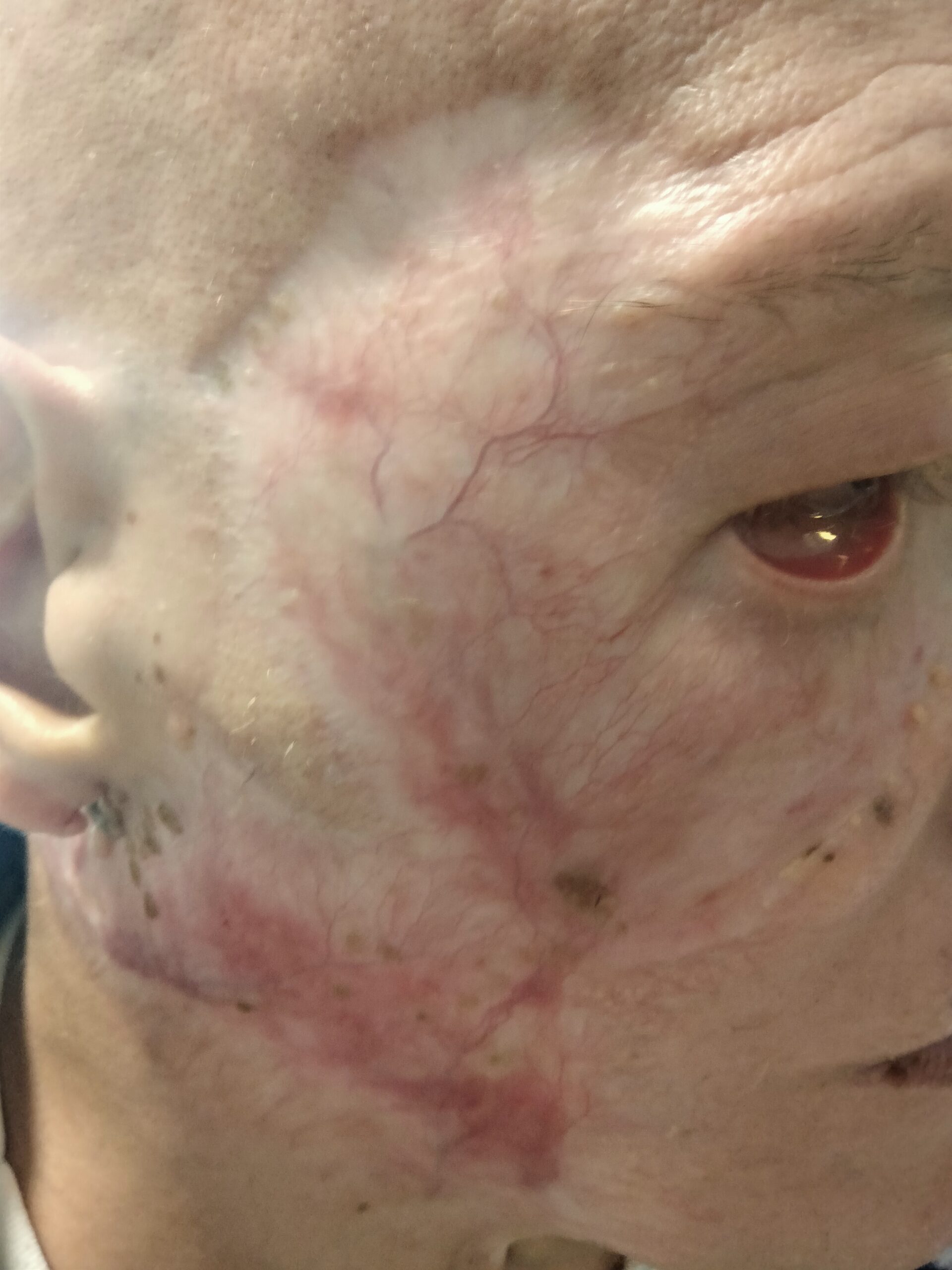My face is fading away. What happens to me? The importance of a mechanism for a Diagnosis
Objectives
We want to show here two key aspects in the Clinic when an uncommon situation is in the origin of the problem of a patient: the importance of an exposure and the possible mechanism involved in the development of the process.
Clinical summary
I was acquainted with Xosé while he was receiving chemotherapy for a testicular tumor at the age of 27. In my first contact, I was impressed when I saw his face. I was hesitant to ask him about the big scar on his face during our first interaction on, he told me the complete history.
Four years ago
Xosé was working in a slaughter house four years before his last diagnosis of testicular cancer. At that time, he was in an intermittent contact with alcohol, and occasionally with cocaine. Every morning, he was touching and displacing a big amount of meat, with both arms, and, sometimes, he had to charge the pieces on his shoulder, after cleaning and washing the flesh. Very often, he was exhausted, sweating, and his face was always wet and itchy.
One day, his face started to suffer a big change, in both cheeks, with a red colour, more itchy than usual, and he was starting to feel a sense of losing the skin and the muscles, spreading the problem to the neck.
Clinical Evolution
He made a consultation with the General Practitioner (GP) who asked for allergies or some exposure to a chemical agent. After a week, the skin was even worse, and the GP sent him to an Internal Medicine doctor who asked for a culture of the skin. At that time, a big scar covered both sides of his face, spreading to the beginning of the neck.
When the internist saw him, his face was red and the skin was absolutely disrupted. No other parts of the body were affected. No other symptoms, such as dyspnea, cough, sore throat, shortness of breath, or abdominal problems were present. A sample of the scar was taking for a culture.
Final Diagnosis
The culture was positive for two bacteria, Proteus mirabilis and Fusobacterium necrophorum, the later a Gram- negative bacteria, a common inhabitant of the alimentary tract within humans and animals, and probably responsible of the clinical picture of the patient. The patient started a combined treatment with ciprofloxacin and clindamicyn, but it took time to see a response. The patient informed that the scars and the infection started to improve when he stopped drinking alcohol.

Questions?
- Do you have any idea about the mechanism of the infection?
- What syndrome is associated with this bacteria?
Since the patient had both arms occupied, he dried his face with the collar of the gown that was contaminated.
Fusobacterium necrophorum is the etiological agent of Lemierre syndrome.
Author: Lorenzo Alonso Carrión
FORO OSLER




